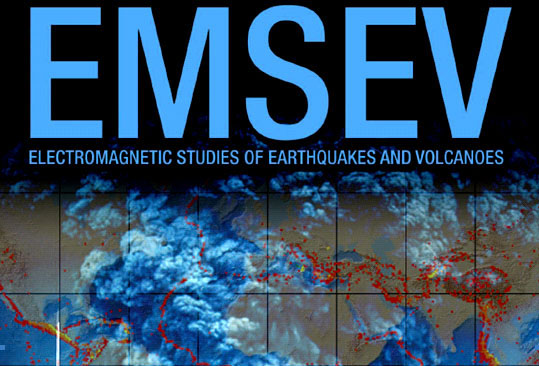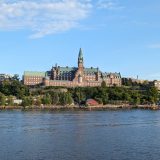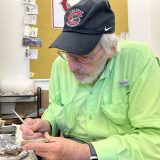
International Scientists Gather at Chapman for Earthquake, Volcano Conference “Electromagnetic Studies of Earthquakes and Volcanoes" will take place October 4th through 6th.
September 29, 2010
Chapman University’s Schmid College of Science will host a major international scientific meeting,“Electromagnetic Studies of Earthquakes and Volcanoes,”Sunday-Wednesday, Oct. 4-6.
This meeting is held once every two years in different parts of the world. It is expected that scientists from the United States, Japan, China, Mexico, France, Italy, Romania, Ukraine, Poland, Greece, Russia, New Zealand and India will attend the meeting (which is not open to the public, but welcomes media attendance). The conference will take place in Chapman’s new Sandhu Conference Center, and is chaired by Professor Ramesh Singh, Ph.D., of the newly formed School of Earth and Environmental Sciences in Chapman’s Schmid College.
“Now more than ever, scientists are making efforts to understand earthquake and volcanic processes to get early signals about these natural phenomena,” said Dr. Singh. “Seismic signals are observed globally that provide information about the time of occurrence, location and magnitude of the earthquakes. We in California are extremely aware of the dangers of earthquakes, of course, but we have seen in places like Haiti and China that they can be especially devastating when they occur in areas that are unprepared and lacking necessary planning and infrastructure. And the entire world recently experienced how the eruption of just one volcano in Iceland could disrupt global transportation and economies.”
The conference will open at 9 a.m. Monday, Oct. 4 with a keynote talk by Thomas K. Rockwell, Ph.D., examining the San Andreas Fault and which areas are most likely to rupture in the near future. Dr. Rockwell is an internationally respected paleoseismologist and geomorphologist, and founder/senior partner of Earth Consultants International.
In other major sessions, John Eichelberger, Ph.D., volcano expert from the U.S. Geological Survey, will speak on the potential for electromagnetics to aid in understanding magma-related hydrothermal systems, and Karl Kappler, Ph.D., of Lawrence Berkeley National Laboratory, will present results of long-term monitoring of ultra-low-frequency electromagnetic fields at Parkfield, California, which lies along the San Andreas Fault and is the most closely observed earthquake zone in the world.
The purpose of holding this working meeting for scientists, said Dr. Singh, is to enhance awareness of earthquakes and volcanoes and give the international scientists the opportunity to visit a small section of the San Andreas Fault, only about 40 miles from the campus. “California is an appropriate place for scientists to observe and understand earthquake and volcanic signals,” Dr. Singh added, “as all along the San Andreas Fault many types of instruments are deployed by scientists to understand the processes associated with earthquakes and volcanic activities using electromagnetic signals.”
This workshop draws together some of the top experts on the planet on earthquakes and volcanoes, who will confer and share their recent research and findings with each other from past earthquakes that have occurred in Mexico, Haiti, Italy, Chile, India, Greece and Japan, as well as the infamous Icelandic volcano, Eyjafjallajokull.
“This international group is making efforts to use electromagnetic signals observed from the ground and from satellite and GPS, to determine if such signals can provide information about impending earthquakes,” said Dr. Singh. “The main challenge before these scientists is the lack of data, since earthquakes have a long periodicity and earthquake locations can change, from one complex location to other complex locations, with varying focal depths.”
A complete conference schedule is posted at the program website.

